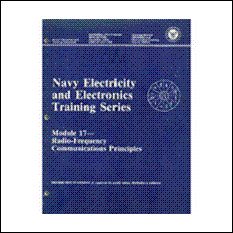High Frequency Communications
The Navy began using HIGH FREQUENCIES for radio communications around
World War I when only a few communications systems were operated on
frequencies near 3 megahertz. When we look at the extensive present-day
use of high frequencies for long-distance communications, the fact that
those Navy systems were intended for very short-range communications of a
few miles seems curious. The general belief at the time was that
frequencies above 1.5 megahertz were useless for communications
purposes.
One of the prominent features of high-frequency, long-distance communications is the variable nature of the propagation medium. (You can study this in the Introduction to Wave Propagation, Transmission Lines, and Antennas).
Successful transmission of hf signals over a long distance is dependent upon refraction of radio waves by layers of the ionosphere. The height and density of these layers is formed mainly by ultraviolet radiation from the sun. They vary significantly with the time of day, season of the year, and the eleven-year cycle of sunspot activity.
Because of these variations, you must generally use more than a single frequency, sometimes up to four or five, to maintain communications on a circuit.
In spite of the difficulties we encounter with hf propagation, the economic and technical advantages of using high frequencies have led to rapid expansion of the use of the hf band. Because the number of users has increased, the hf spectrum is approaching saturation.
The hf band is shared by many domestic and foreign users, and only portions scattered throughout the band are allocated to the military services. Like other agencies, Navy requirements have grown; the capacity of the Navy's assigned portion of the hf spectrum has become severely taxed.
The use of single-sideband equipment and the application of independent sideband techniques have increased the capacity, but not enough to catch up with the demand. Some predict that satellite communications will eventually relieve congestion in the hf band and that, for some types of service, it will replace hf for long-distance communications.
Even with new technology the hf spectrum most likely will continue to be in high demand for some time.

















